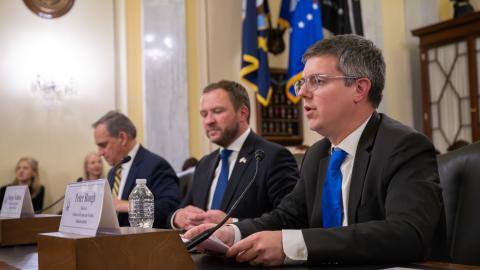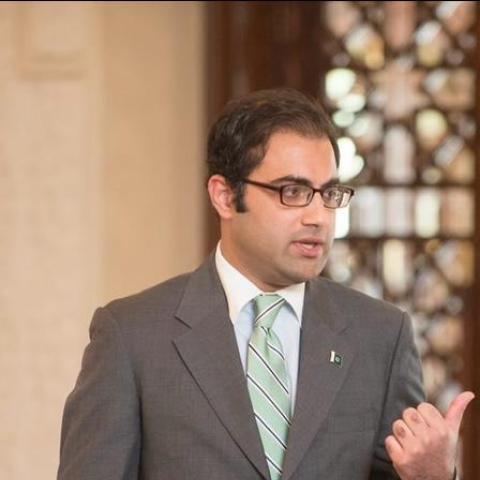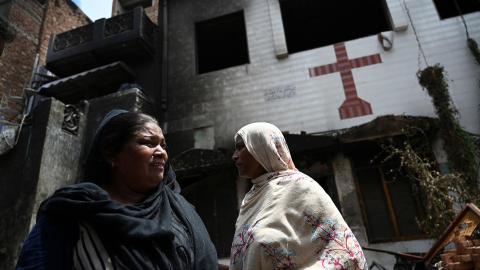The militant landscape in Pakistan is varied and complex. A range of ideologically motivated Islamist terrorist groups, ethno-political groups, and irridentist nationalist-separatist terrorist organizations operate across the country. The Global War on Terror that began in 2001, culminating in the return of the Afghan Taliban to power in Kabul in August 2021, has invigorated Islamist terrorists in Pakistan over the last two decades. The most severe threat emanates from Islamist terrorism, but the country also experiences multiple other forms of terrorism. Since the Soviet Union’s invasion of Afghanistan and subsequent war (1979-89) various Afghanistan-based militants have operated in neighboring Pakistan. This includes a mixture of globally and regionally oriented groups such as al-Qaeda, the Afghan Taliban, Islamic State Khorasan Province (ISKP), Lashkar-e-Jhangvi, and Tehreek-e-Taliban Pakistan, the latter of which the Government of Pakistan recently branded as “Khawarij.”1
Organized terrorism and insurgency are not the only forms of political violence that Pakistan faces, however. In recent years, a new form of political violence has become increasingly prevalent: mob violence against individuals accused of disobeying Islamic injunctions. These supposed infractions may range from not praying to the mere suspicion of uttering something sacrilegious. Scores of people have been declared as heretics and subsequently lynched by religious fanatics because they were alleged to have committed certain acts falling under Pakistan’s severe religious laws, which carry maximum punishments (if they are to reach a court of law at all). This new wave of sporadic violence in Pakistan does not quite fit standard understandings of terrorism but could best be described as religious vigilantism. This article analyzes this trend as evidence of growing extremist tendencies in contemporary Pakistani society, using an original dataset of cases of religious vigilantism between 2014 and 2024 compiled by the authors from open-source material.
Defining Religious Vigilantism
We propose defining religious vigilantism as any form of unauthorized, quasi-spontaneous, and extrajudicial violence taken by intolerant individuals (typically a mob) against an individual or individuals that were observed or rumored to have violated certain religious tenets.2 Certain key features of religious vigilantism include:
- A motivation to uphold religious values
- Extrajudicial in nature
- The underlying accusations often lack rigorous evidence
Scores of examples throughout history could be given here such as certain lynchings of women accused of witchcraft in Medieval Europe and colonial America. More recently, this trend has been observed in India, where Hindu nationalists have endeavored to enforce cow protection laws while harassing religious minorities.3 However, the focus of the present study is to examine the surge of religious vigilantism in Pakistan, and we will remain focused on that subject.
Historical Background
During the British Raj, colonial authorities enacted religious laws in order to safeguard the religious sensitivities of their subject populations while keeping in view the diverse nature of the Indian subcontinent. These laws were intended to maintain public order by preventing actions or speech that could inflame religious sentiments and spark communal violence, particularly between Hindus, Muslims, Sikhs, and Christians. The raison d ‘etre of these laws was thus to penalize individuals involved in activities or speech that could disturb the peace and complicate colonial administration by the British.4
The first penal law enacted under the British Raj was the Indian Penal Code (IPC) of 1860, principally drafted by Lord Thomas Babington Macaulay. IPC Section 295 included one of the earliest legal provisions addressing religious sentiments. The said law criminalized the destruction, damage, or defilement of any place of worship or sacred object with the intent to insult the religion of any group of people. The purpose of this law was to prevent acts that could lead to communal violence. Violators could be punished with imprisonment, a fine, or both.
Section 296 of the IPC similarly addressed the issue of disturbing religious assemblies. It criminalized any voluntary disturbance to a lawful assembly engaged in religious worship or ceremonies.5 Similar to Section 295, the aim was to maintain peace and order and prevent any communal frictions resulting from offended religious sentiments.6 Similarly, Section 298 criminalized the act of uttering words, making gestures, or producing sounds with the deliberate intent to wound the religious feelings of any person. Section 295A, which was introduced in 1927 after a blasphemous publication resulted in the killing of its publisher, was designed to prevent verbal insults or gestures directed at individuals’ religious beliefs, with punishment being a jail term of up to one year.7
To this day, India and Pakistan continue to use versions of these colonial-era laws to police religious speech. In India, since the ascension to power of the Bhartiya Janta Party (BJP) under Prime Minister Narendra Modi in 2014, these laws have become more pronounced, with a large uptick in clashes among various religious communities and subsequent incidents of mob violence and lynching.8
In Pakistan, the scope and implementation of religious speech laws expanded earlier, during the military regime of General Zia ul Haq (1977-1988)9 General Zia initiated an Islamization process of Pakistan during his reign, which included amending laws and adding new sections to the existing legal code, as well as implementing a series of policies to align social, political, and legal principles with Islamic injunctions (as he understood them). This included legal reforms such as the Hudood Ordinance (1979) that mandated certain physical punishments for extreme crimes under sharia law; new blasphemy laws; the establishment of a Federal Shariat Court; and an ordinance on Zakat and Usher (1980),10 which established a system for the assessment, collection, and disbursement of two Islamic pillars of charity and land tax.General Zia’s goal was to remake Pakistan as a state committed to Islamic principles, likely in order to help legitimize his military regime after the 1977 coup that overthrew the elected government of Prime Minister Zulfiqar Ali Bhutto. Rules regarding interest free banking, Islamization of the school curriculum, unofficial moral policing, increasing restrictions on women, and finally the complete Sharia Bill of 1988 were also introduced in this time.11 These laws served as a mechanism for preventing religious insults that might disturb the peace, but they also helped pave the way for religious vigilantism in the years to come.12
Religious Extremism in Pakistan
Sectarian and communal violence have been a constant feature of Pakistani politics since the country’s independence. This includes tensions between Sunni and Shia sects and the growth of militant anti-Shia terrorist organizations such as Lashkar-e-Janghvi (LeJ) in the 1990s and the Islamic State’s Khorasan Province (ISKP) since 2014.13 Violence against religious minorities is not limited to the Shia, however: Hindu and Christian minorities have seen their neighborhoods and places of worships attacked and burnt.
The following chart includes cases of religious vigilantism since 2014 recorded by the authors through a review of Pakistani media and social media. This original dataset might not be exhaustive, but it nevertheless underscores common dimensions seen across cases of religious vigilantism in Pakistan.
Chronology of Mob Lynchings in Pakistan from 2014 to 2024
|
Sr# |
Date |
Article |
|---|---|---|
|
1 |
November 4, 2014 |
A mob lynches two Christian laborers, Shama and Shahzad Masih, at the site of their brick kiln factory in Kot Radha Krishan, Punjab province over allegations of desecrating the Muslim Holy Book.14 (An anti-terrorism court eventually charges over 106 people over the incident the following year.) |
|
2 |
March 15, 2015 |
Twin explosions damage Roman Catholic Churches in Lahore, Pakistan during a Sunday mass. The attacks kill 15 people and are followed by mob violence in which two Muslims accused of being militants are killed.15 One of the victims of the mob lynching is subsequently identified as a Muslim laborer working in a Christian-majority neighborhood, suggesting that the claims that he was a militant involved in the attack were spurious. |
|
3 |
April 13, 2017 |
Mashal Khan, a student of Abdul Wali Khan University in Mardan is lynched on the premises of the university over allegations of posting blasphemous content online.16 |
|
4 |
April 21, 2017 |
A mob attacks a man accused of committing blasphemy during Friday prayers in Chitral, northern Pakistan. Six policemen are also injured in the ensuing violence.17 |
|
5 |
May 3, 2017 |
A charged mob attacks a police station in an attempt to lynch a Hindu man alleged to have posted an incendiary image on social media in Hub, Balochistan.18 A 10-year-old boy is killed and five others are wounded in the ensuing crossfire. |
|
6 |
July 29, 2020 |
Tahir Naseem, an American citizen, is shot dead in a courtroom in Peshawar while he is facing allegations of blasphemy.19 |
|
7 |
November 28, 2021 |
A mob sets fire to a police station in Charsadda, northwest Pakistan, after police authorities refuse to hand over a man suspected of sacrilege.20 |
|
8 |
December 3, 2021 |
A Sri Lankan factory manager, Priyanka Kumara Diyawadana, is lynched by a mob in Sialkot over allegations of committing sacrilege.21 |
|
9 |
December 2, 2022 |
A mentally unstable man, Mushtaq Ahmed, is lynched by a mob in Punjab province after allegedly burning the Holy Quran inside a mosque.22 |
|
10 |
February 11, 2023 |
An angry mob lynches a man after he is arrested for blasphemy in Nankana District, Punjab. The mob storms the police station and kills him in his cell.23 |
|
11 |
May 7, 2023 |
A local cleric, Nigar Alam, is lynched by a mob in the village of Sawaldher, Mardan District in northwest Pakistan after allegedly making blasphemous remarks at the end of a political rally.24 |
|
12 |
August 5, 2023 |
Abdul Rauf, a teacher recently accused of committing blasphemy, is shot by unknown assailants while riding on his motorbike in Turbat, Balochistan.25 |
|
13 |
August 12, 2023 |
Naseer Ahmed, an Ahmadi man, is reportedly stabbed and killed in Rabwah in Punjab province over his refusal to chant slogans in support of the TLP, Pakistan’s Islamist anti-blasphemy party.26 |
|
14 |
August 16, 2023 |
A mob storms a Christian locality in the district of Jaranwala in Faisalabad, burning several Christian homes and churches over allegations of blasphemy.27 |
|
15 |
May 25, 2024 |
A mob ransacks a Christian man’s factory and sets fire to his home over allegations of blasphemy in the city of Sargodha. The man dies of his injuries a week later.28 |
|
16 |
June 21, 2024 |
Violent mobs storm a police station, killing a man accused of desecrating holy scriptures.29 |
|
17 |
June 24, 2024 |
Violent mobs attack a police station in Swat, killing a man accused of blasphemy and burning his body.30 |
Note: The data in this chart was compiled by the authors based on their analysis of Pakistani media reportage across print, electronic, and social media streams.
Causes of Religious Vigilantism in Pakistan
Pakistan’s present crisis of religious vigilantism has its roots in extremist religious ideology, which itself can be explained by several factors. These range from recent changes in Pakistan’s political space, specifically the rise of a political party dedicated to enforcing anti-blasphemy laws, to longer-term, social and political factors that have been shaping Pakistani society for decades. This section examines these various factors.
The 1970s and 1980s: The Islamization of society and geopolitics of religious extremism
Today’s violent extremism is partially a result of the Islamization of Pakistani society that began the late 1970s. While Pakistan has been a Sunni Muslim-majority state since its inception, certain elements of sharia law were only first enacted during the era of Prime Minister Zulfiqar Ali Bhutto (1972-77) as part of his attempts to appease Islamist parties that formed part of a growing opposition alliance towards the end of his rule. In 1977, an opposition alliance formed against Bhutto’s left-leaning government. The Pakistan National Alliance, or PNA, was chiefly a religious alliance of seven parties that launched a countrywide agitation after Pakistan’s disputed 1977 elections. In response to this pressure and allegations that he had rigged the elections, Prime Minister Bhutto began introducing an Islamist agenda, declaring Friday to be a holiday, outlawing gambling, and banning the sale and consumption of alcohol. Bhutto intended these to be temporary measures, to be reversed once he could return to power without the support of Islamist parties,31 but in any case, he failed to appease the Islamist opposition. The disputed 1977 elections paved the way for a coup in 1977 that brought General Zia to power with the support of the Islamist PNA.32 (Bhutto was eventually hanged by General Zia’s government in 1979.) General Zia’s “Martial Law” regime saw further Islamic clauses added to Pakistan’s constitution by executive order. General Zia also launched his Islamization policy, heralding an era of imposing religious laws and practices into the business of the state. In particular, as a prominent part of the PNA, the Jamaat-e-Islami (JeI) Islamist party emerged as one of the key beneficiaries of the 1977 coup. JeI consequently wielded considerable influence on the Islamization agenda and convinced General Zia to bring rapid changes into the country’s banking, judicial, and educational sectors, with a particular emphasis on changing the primary school curriculum.33 More than forty years later, Pakistani state schools still teach children the same curricula established by JeI and General Zia.
It was during the Islamization policy of General Zia’s regime that religious intolerance began to escalate into sectarian violence. This was partially due to geopolitical factors: Ayatollah Khomeini’s Iranian revolution in neighboring Iran in 1979 was a catalyst in the exponential growth of Shia Islamism within Central and South Asia and the Middle East, as the Iranian regime sought to export its revolution abroad.34 This had a major impact on Pakistan, since the country boasts the second largest Shia population outside Iran but was undergoing its own distinctly Sunni form of Islamization at the time. While Iran was indeed actively trying to foment Shia unrest in Pakistan, General Zia responded to the Iranian threat by ramping up the Islamization of Pakistan in a way that further persecuted religious minorities such as Shia, thereby aggravating the regional rivalry while simultaneously increasing religious extremism in Pakistan.
Similarly, the emergence of transnational jihadism next door in Afghanistan after 1979 saw Pakistan and its Western cities such as Peshawar and Quetta become bastions of Salafi-jihadist ideologues that contributed to the rise of extremism within broader Pakistani society. The exponential growth of Deobandi and Salafi-jihadist madrassahs in western Pakistan, established to serve the recruitment needs of the Afghan Mujahideen, contributed to the rise in extremism and intolerance across Pakistani society.35 Mosques, particularly in areas near the country’s border with Afghanistan, echoed with the clarion call for jihad, often issued by non-Pakistanis at the pulpit. The military regime tolerated these jihadists, as it was desperate for international and domestic legitimacy and found willing partners in the West and Middle East who were eager to finance the anti-Soviet Afghan jihad. (The CIA had launched Operation Cyclone, which would eventually become one of the biggest and most expensive covert operations in its history, in 1979 and coordinated support for the Afghan Mujahideen with General Zia’s regime.36
Politicized religious vigilantism: The formation of the TLP
By the 2000s, vigilante mobs were becoming emboldened as they sought to remake Pakistani society along Islamist lines in the same manner as Iran or Saudi Arabia. In contrast to those countries, however, and despite the growth of Islamist sentiments, the Pakistani state never established any official religious police force. Instead, a culture of religious vigilantism was beginning to take shape.
While Islamic morality police were never officially established in Pakistan, in 2015, a far-right Islamist political party that commits itself to “defending the honor” of the Prophet Mohammed, Tehreek-e-Labiak Pakistan (TLP), was formed.37 While TLP is not solely responsible for religious vigilantism in Pakistan, it is the most vocal and politically organized advocate of such violence. The TLP was founded by a religious cleric of the Barelvi sect, Khadim Hussain Rizvi, and its core ideology is the staunch defense of blasphemy laws. The TLP has emerged as a significant political force since 2015 and exhibits a powerful street presence in all provinces of Pakistan. The party also received a significant number of votes in general elections in 2018 and 2024.38 Some scholars have attributed a rise in religious vigilantism to the TLP’s founding in 2015, given that the TLP draws its strength from the Barelvi sect, which constitutes a majority in Pakistan.39
Televangelists and social media activists
Social media has played a role in fanning extremist sentiments and religious vigilantism. There have been incidents when calls for killings have been disseminated rapidly over social media, such as the storming of the police station in Hub, Balochistan in 2017 recorded in our database. Religious televangelists and self-proclaimed religious scholars on social media—both Pakistani and foreign scholars—play a major role in spreading extremist interpretations of the country's Islamic laws as well. Since the emergence of social media platforms in the 21st century, a number of clerics and televangelists have emerged who justify religious violence and incite hatred against minority groups, creating fertile ground for religious vigilantism. A highly popular (now late) televangelist, Aamir Liaqat Hussain, was particularly controversial and routinely in the cross chairs of the Pakistani authorities for his inflammatory remarks on television about religious minorities, against whom he often called for violence.40 During a recent trip to Pakistan, another televangelist, the Malaysia-based Indian Dr. Zakir Naik, made controversial speeches in which he implied that some religions are absurd and a “farce.” Pakistan’s Christian community wrote a letter to the President of Pakistan in protest.41
Some religious televangelists have tremendous reach, as they are prominent on television and the internet, enabling them to impact large audiences globally, sometimes bypassing traditional checks and balances of content moderation. Satellite channels stream the content of these televangelists to millions, not only in Pakistan but globally. Self-taught and self-proclaimed televangelist scholars like Dr. Zakir Naik often carry a specific form of popular authority even as they interpret Islamic injunctions in a very different manner than classically trained scholars. For example, Naik’s preaching is highly misogynistic. He refused to share the stage with orphan girls in one instance, and he has similarly denounced the role of women in the workforce in interviews.42 Yet these preachers can amass large followings, and they often mobilize their supporters with extremist rhetoric that depicts religious minorities as sub-humans. Their rhetoric reflects a Manichean mindset in which Islam is under attack and Pakistani society must rise up to confront supposed un-Islamic practices, individuals, and indeed entire faith communities. This rhetoric creates an environment wherein extrajudicial actions are seen by the broader community as acceptable or even necessary to defend the faith.
Weakening writ of the state
Pakistan, with its complex militant landscape, is struggling as a result of a weakened internal security infrastructure. A plethora of Islamist, sectarian, nationalist-separatist, and ethno-political terrorist organizations operate in Pakistan and perpetrate hundreds of terrorist attacks every year, killing thousands.43 The military, and the less well-trained and -equipped police, often struggle to effectively combat these groups. Furthermore, Pakistan’s perpetual economic poly-crisis and the politicization of law enforcement undermine the professionalism, effectiveness, and impartiality of security agencies. Police officers often align themselves with the country’s political and military elite to accrue benefits such as plum postings, and many run social media accounts for personal publicity rather than to promote and enhance the state’s policing work. Pakistani law enforcement is increasingly used for suppressing political dissent, to the detriment of its ability to perform routine yet essential responsibilities such as ensuring law and order.44
This has produced a scenario in which law enforcement is frequently unable, or unwilling, to maintain law and order and provide due process in instances in which individuals or communities are accused of sacrilege or similar offenses. Pakistanis increasingly take law into their own hands to settle scores and personal disputes. They feel justified in taking extrajudicial actions as they believe that the legal system is either too slow or too lenient toward offenders. Indeed, a number of incidents of religious vigilantism referenced in our dataset indicate that personal disputes might have been a catalyst in some lynchings, such as the 2015 lynchings of Shama and Shahzad Masih and the 2017 lynching of university student Mashal Khan.
Whatever the impetus behind a specific incident of religious violence, law enforcement officials have been accused in several cases of standing by and being complicit in mob actions. In several of the cases referenced in our dataset, an angry mob stormed a police station and seized a suspect from custody and murdered them. More recently, in September 2024, a high-ranking police officer in Sindh province actually ordered the extrajudicial killing of a doctor accused of saying something sacrilegious on social media (the victim’s social media account was apparently hacked),45 pointing to a culture of lawlessness that has taken root even in the upper echelons of the police.
As a result of weakening state capacity, the legal system has also proven unable to provide justice in cases of accusations of religious offense, which further incentivizes vigilante behavior. Court cases are often lengthy affairs, which leaves people frustrated with the inefficiency of the justice system. Thus, common people fear speaking out against religious vigilantism not only due to societal pressures, but also because it is clear the state cannot or will not protect them if they were to fall victim to the mob.
Addressing the Issue
The crisis of religious vigilantism appears to be worsening. While our database covers incidents reported in the media, sources we interviewed across Pakistan suggested that the crisis is even worse than our database would suggest, with far more incidents going unreported—potentially as many as one a month across the country—due to a pervasive fear of speaking out about the problem. Our research suggests that Punjab has seen the most cases of such violence, which might be explained by the strong support that the TLP enjoys in the province owing to the prevalence of Barelvi Islam there, but vigilantism has been witnessed in numerous urban centers and small towns across Pakistan. There does not appear to be any end to this crisis in sight, as the institutions that should be able to reign in this problem—the police, courts, and indeed religious scholars and politicians—have proved highly inadequate in their responses. Police provide limited protection to victims of these mobs, if they are not actively participating in the violence themselves.
Religious vigilantism undermines the rule of law and leads to a culture of fear and self-censorship in which individuals, especially those from religious minorities, hesitate to express their beliefs or challenge dominant religious narratives. The vigilantism also damages Pakistan’s international image, impacting foreign relations and economic development. A senior European diplomat told one of the authors how incidents of mob violence make his task of sustaining his country’s investments in Pakistan—let alone inviting new investment—a herculean task.
Pakistan must tackle the crisis of religious vigilantism if it wants to improve its economy, security, and international standing. The legal pathways to doing so are risky, as any amendments to religious laws would elicit a further emergence of protests and mob violence due to staunch opposition from Islamist parties (which have strong followership and experience mobilizing protesters). Even discussing amending such laws in political forums would cause immense opposition from Islamist parties. In the recent past, when religious parties have demonstrated across the country, it has resulted in damages amounting to billions of rupees affecting public and private properties alike.46
There are other options available that might take longer to implement but could eventually prove effective in addressing the issue. First, there is a need to strengthen the country’s law enforcement and security forces to effectively curtail extrajudicial vigilante activities. Key components of such reforms would include the promotion and rotation of officers on merit (many law enforcement officials have served with distinction either in Pakistan or in UN missions abroad) and operational autonomy for officers to avoid undue political interference. This would also require thoroughly reforming the police forces in all four provinces as well as the Islamabad Capital Territory Police. Enhanced training to boost police and prosecutor capacity in investigative procedures and victim support, while not a complete solution, could help strengthen the rule of law in small but important ways. Relatedly, Pakistan’s archaic justice system is deeply compromised, characterized by a lack of qualified judges and adequate job protection along with extremely weak training for prosecutors. Anti-terrorism courts and indeed the entire judicial framework need immediate reforms in order to more effectively try perpetrators of religious vigilante violence.
The Pakistani state must do more to regain its monopoly on violence. This includes finding an effective way to deal with the growing challenges of militancy in the country. While the state has long insisted on military solutions to any militant challenge, given its inability to deliver results through such an approach to date, it should also consider dialogue where possible.
The Pakistani state must do more to combat online hate speech, and there must be more legal clarity pertaining to these issues. Existing laws for hate speech include the Prevention of Electronic Crimes Act (PECA) 2016, but this statute suffers from a lack of a clear definition of hate speech, and there is likewise no mechanism for implementation. A regulatory framework for online hate speech must be enacted with adequate penalties for offenders, albeit in a manner that does not infringe on free speech. A related challenge will be to ensure that any such amendments or new laws are not used against religious minorities, which is a risk given Pakistan’s recent history. While the challenge of religious vigilantism may seem significant, the Pakistani state has indicated that it recognizes the challenges posed by vigilante actions and has previously shown the capacity to clamp down on the problem when forced to, as seen when the state suppressed rioters who attacked Western fast-food chains in the wake of the Gaza war.47
The media and clerics will also have to play a critical role in addressing the issue of religious vigilantism to avoid fanning sectarian flames. This is a significant challenge, given how pervasive such extremist attitudes have become in Pakistan. The state will have to work in partnership with non-governmental organizations to cultivate stronger ties with journalists and seminary and mosque leaders across the country to mitigate religious extremism and hate speech.
Conclusion
Religious vigilantism should be a matter of grave concern for Pakistanis and the country’s international partners. The cases of religious vigilantism examined in this study occurred between 2014 and 2024, underscoring how recent and contemporary a trend this is, and most of the victims were targeted on flimsy and unsubstantiated allegations without any form of due process. To date, the government has not been able to devise a strategy to combat and mitigate the challenge and has not taken steps to address the underlying conditions that drive the crisis. Admittedly, the crisis is driven by multiple factors, and the policies of past governments have contributed to the conditions behind this vicious cycle of violence.
Any approach to resolving this crisis will have to involve both national policy as well as local outreach across the country to engage the nation’s diverse population. There is a dire need to reeducate and reorient people towards a more tolerant understanding of interfaith relations. Pakistan could benefit in this regard from the experience of other Muslim-majority countries such as Saudi Arabia and Indonesia to learn how to best curtail extremist tendencies in society.















